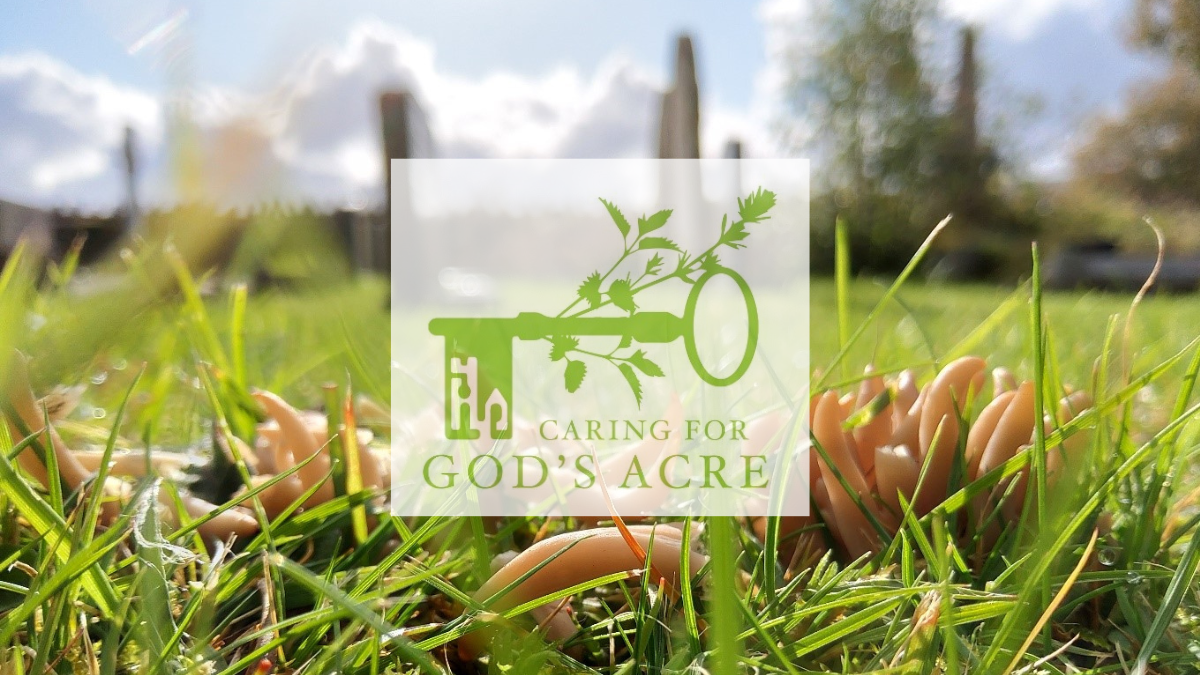
Wonderful Waxcaps
By October, the areas of long, meadow grass within a churchyard or cemetery will have been mown short and raked, making it is easy to wander around and look for colourful fungi. Old grasslands, like those found in burial grounds, have a fabulously complex web of life beneath the sward, of which fungi are a key part. These grassland fungi, which are different species from those found growing on trees or on deadwood on the ground, are ‘indicator species’ showing an observer that this grassland is precious, has not been ploughed, fertilised or treated with chemicals for a long time (if ever).
The mycelium of the fungi is the part below ground, this consists of thread-like ‘hyphae’ which may be connected to a range of grasses, mosses, trees and flowering plants. After rain, and often in the autumn, the mycelium pushes up the fungal equivalent of a fruit above the ground where we can see it. Fungi are largely made of water and so can appear quickly, pumped up by hydrostatic power. The purpose of this is to spread the species far and wide, with a single mushroom able to contain vast numbers of microscopic spores. In the grassland the fungi you find might be waxcaps and pinkgills both of which are shaped like a small mushroom, or spindles and earth tongues, both of which are long and thin. Many fungi are long-lived and may not fruit every year, some only fruiting once in a decade so are rarely seen. They continue to grow and spread beneath the ground however.
Grassland fungi have long captured our imaginations as their names indicate. Look for scarlet, parrot, snowy, butter and ballerina waxcaps. How about skinny club, crested coral, golden spindles or hairy earthtongue.
Although shiny and brightly coloured, these grassland fungi can be difficult to identify as they can change colour with time. Some of the colours are water soluble so fade or change quickly, particularly if it rains. They are however delightful to look at, and even if you don’t know which waxcap or spindle you are looking at, the presence of these grassland fungi is relevant and worth recording. If you take a photo of the top, side and ideally the underside showing the gills where the spores are found, it may be possible for someone to identify it, particularly if you use the iNaturalist app on a smartphone or tablet.
Grassland fungi need our help so please look after them. Always rake off the cuttings after mowing, strimming or scything grassland, whether it is long or short grass. This helps to keep the soil fertility low which the fungi need, as do the wildflowers. Avoid any chemicals and keep grasslands managed with regular cutting so that they don’t turn become coarse and rough. You may be rewarded with a scattering of colourful fungi looking like jewels across the sward. As well as looking pretty and adding to the richness of biodiversity they, and the other plants, lichens, invertebrates and microbes are all storing carbon in our soils, one of the many natural solutions to climate change.
All the best,
Diocesan Churchyard Environmental Advisor
www.caringforgodsacre.org.uk - individuals and groups in the diocese receive 20% members discount on all CfGA materials. Use the discount code diomem22
